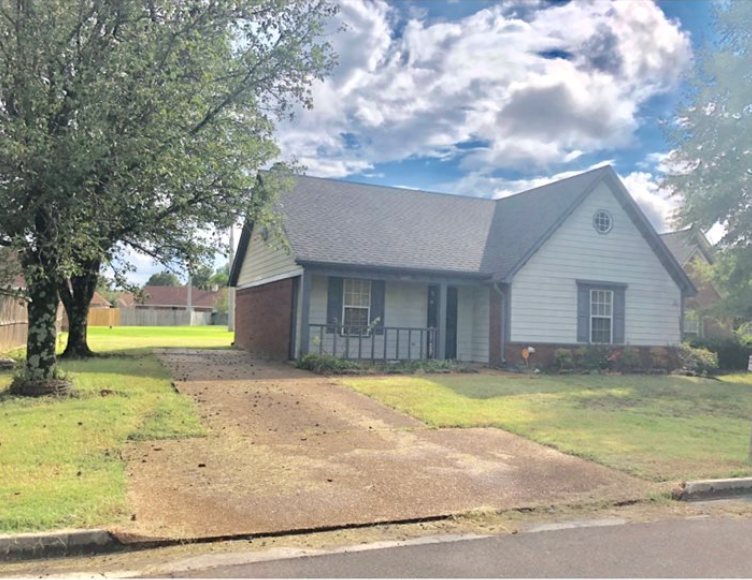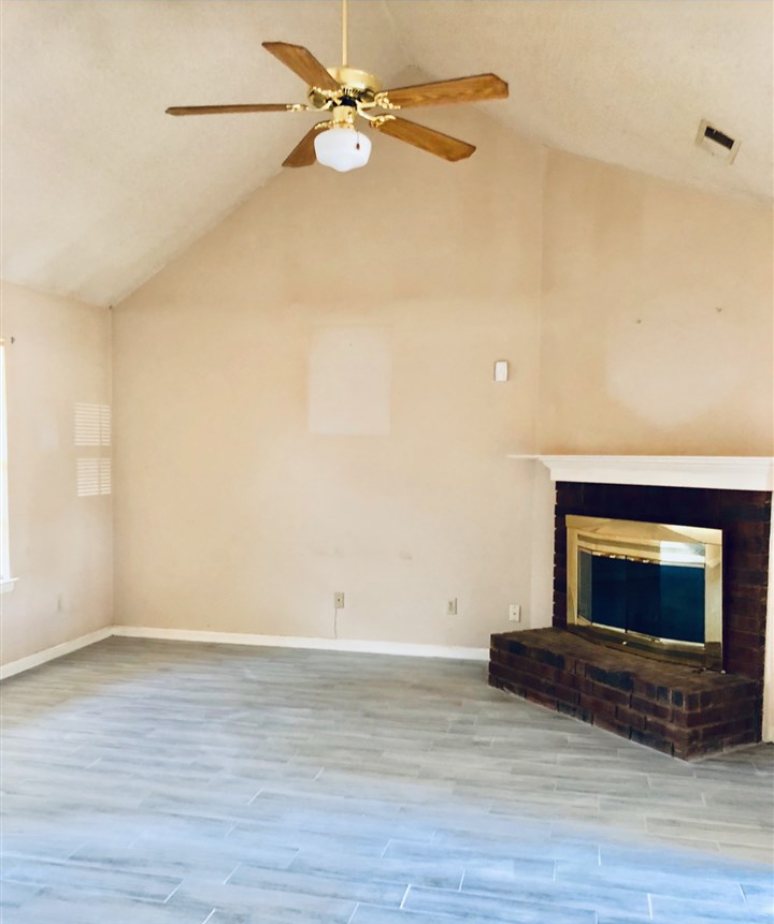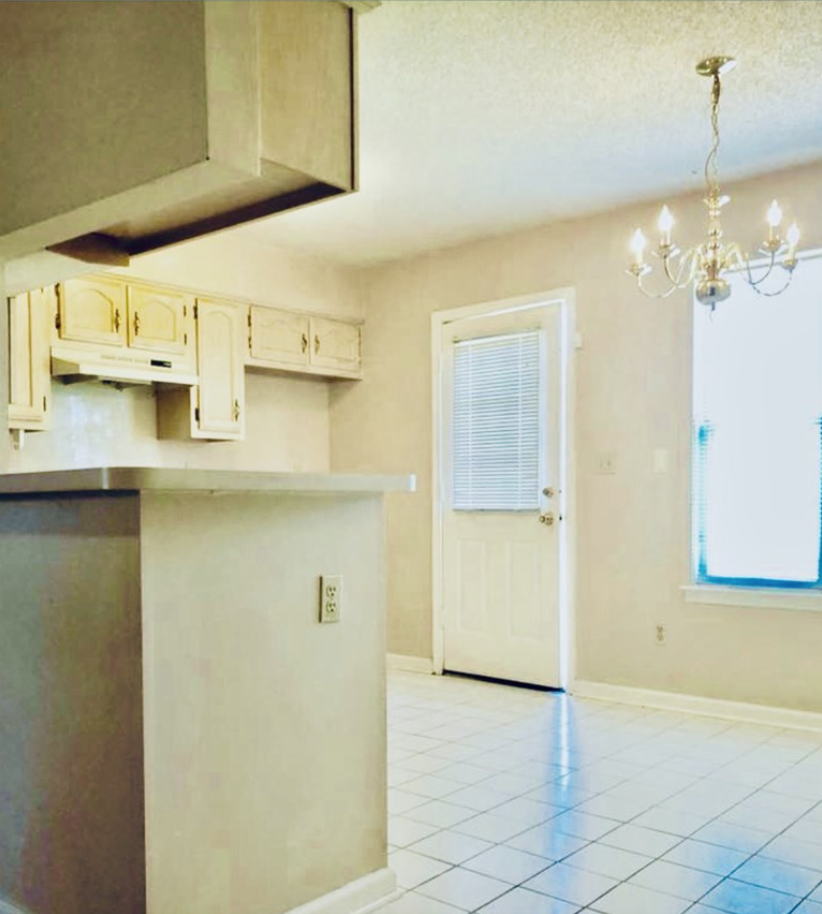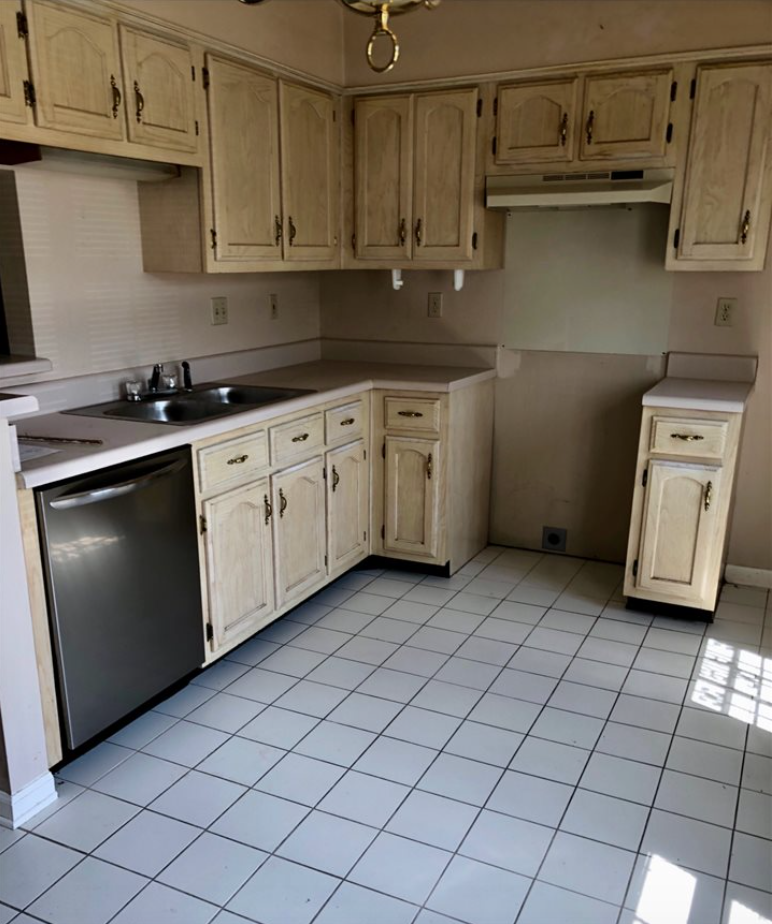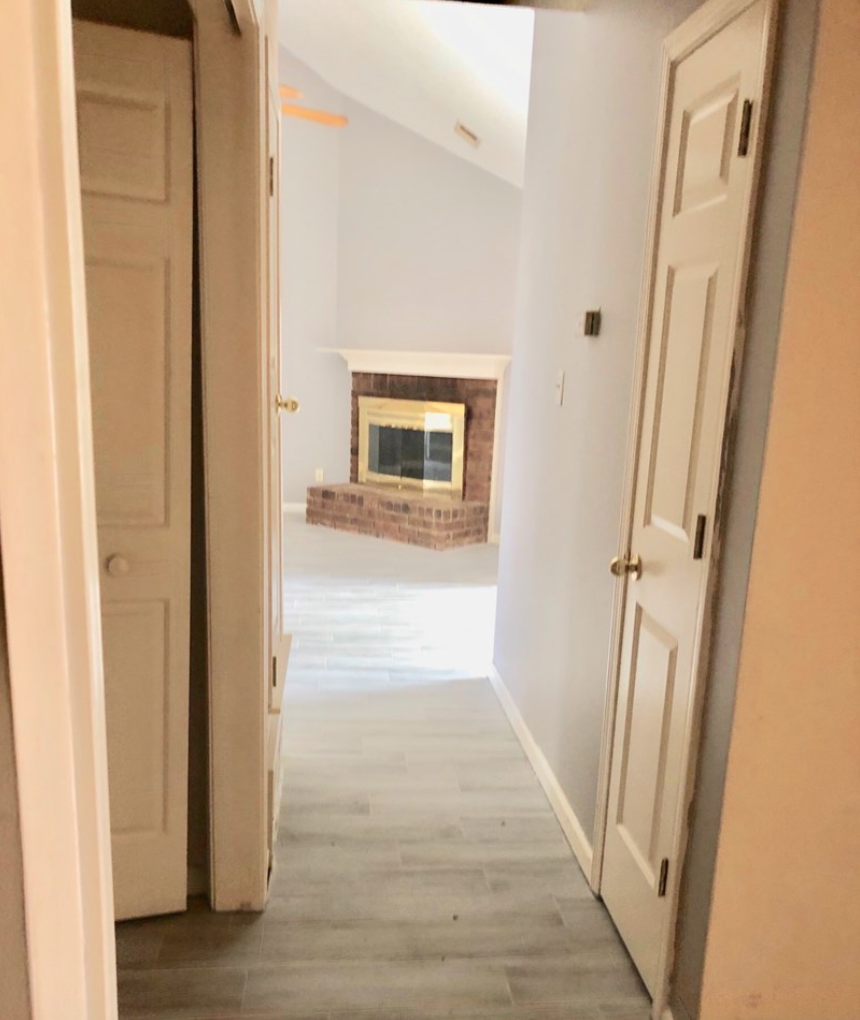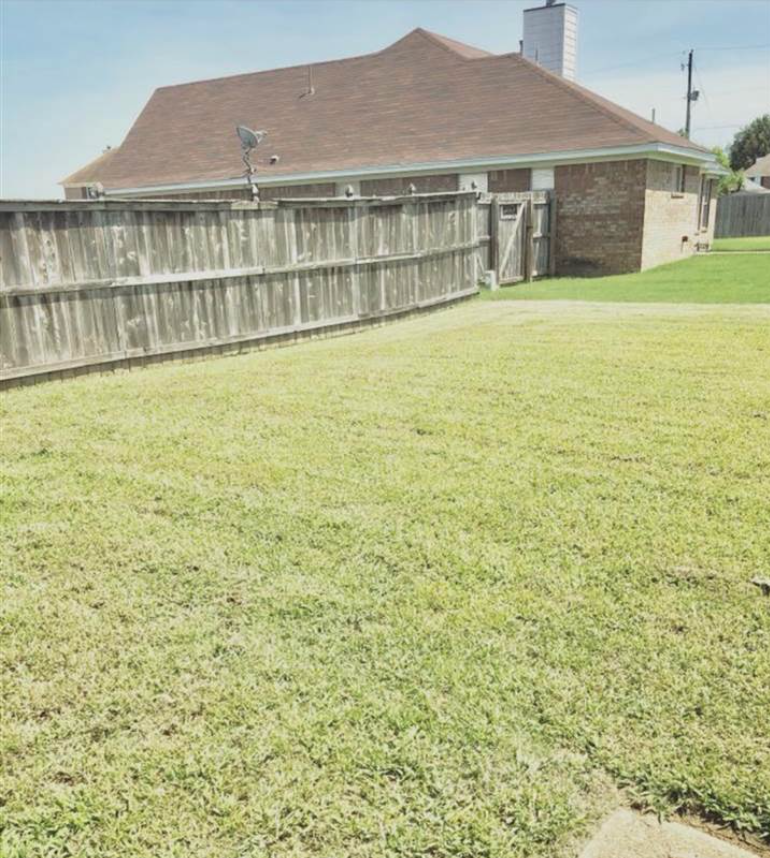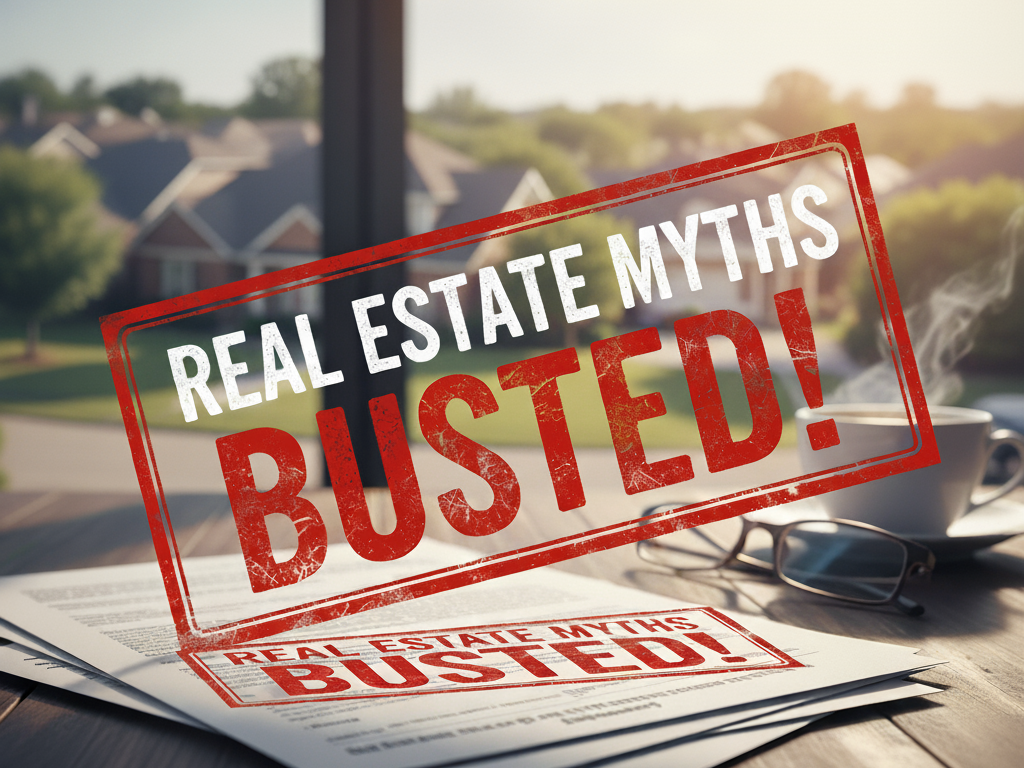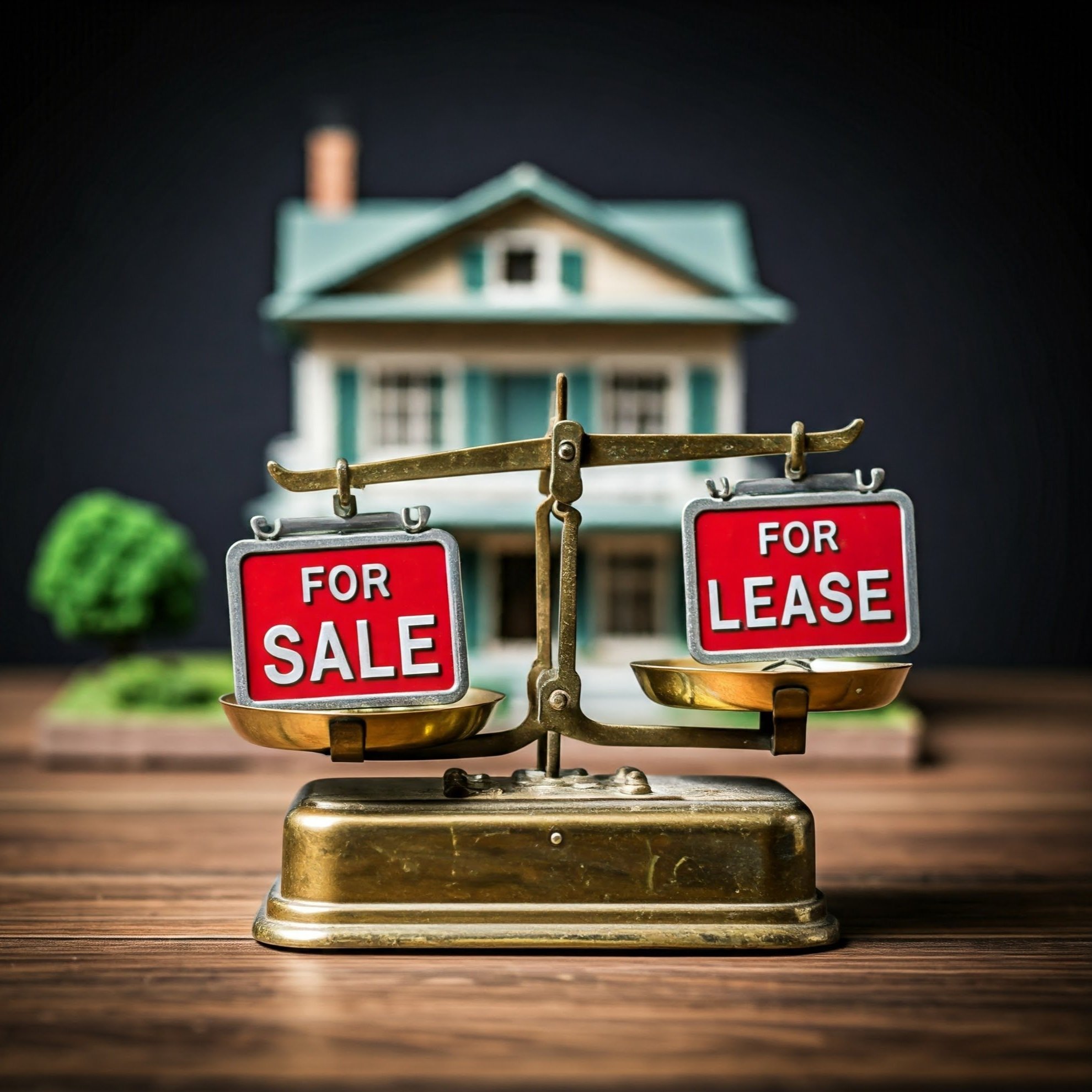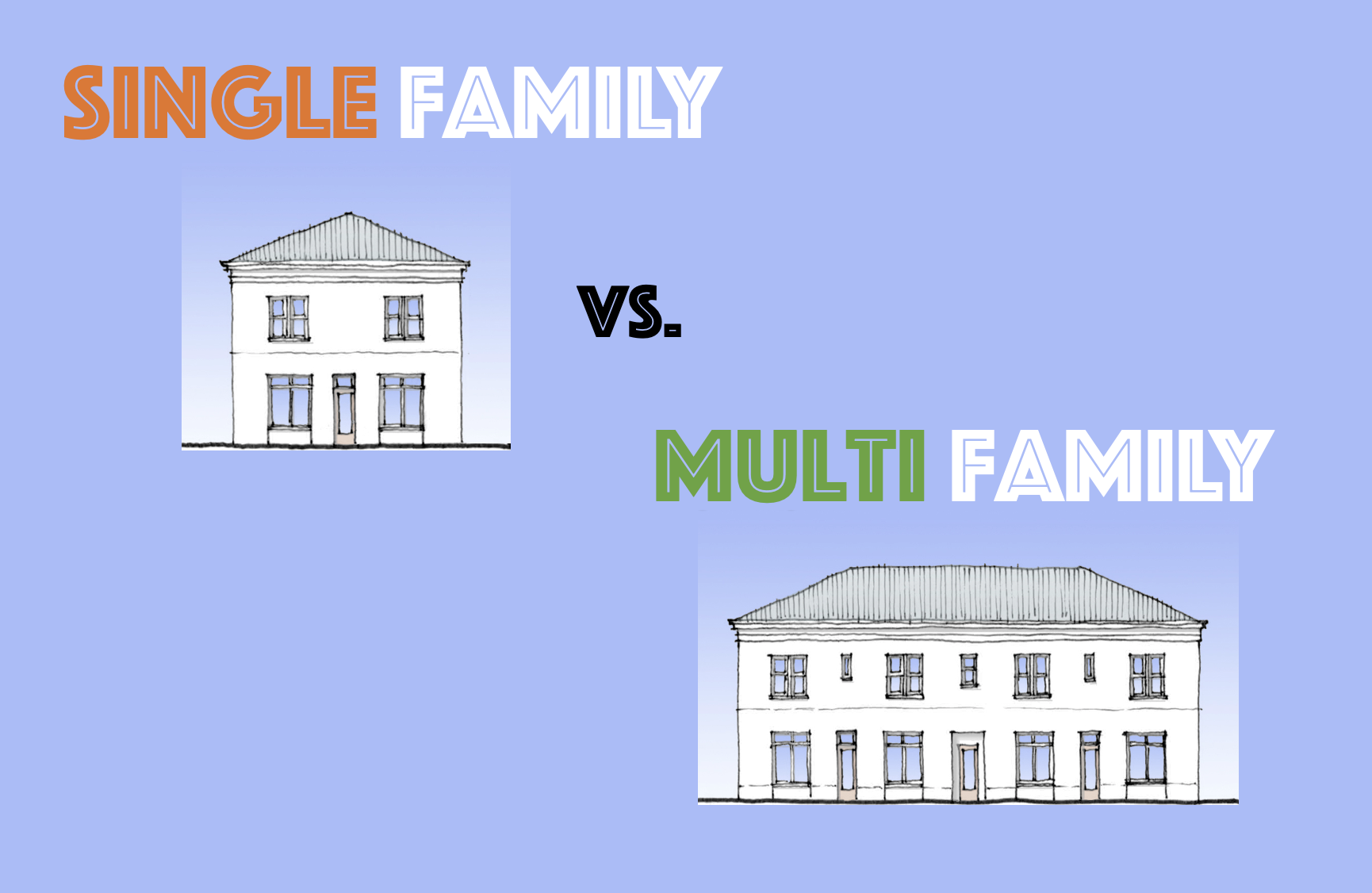Occupied or Vacant: Which is Better for Rental Properties?
Last updated: 2023
The allure of buying an occupied rental property is obvious: from the day you close, you have rent and cash flow coming in. Many new investors intuitively see the value in this – and it turns out their intuition is quite correct. We’ll look at some numbers later on that illustrate just how valuable it is to be occupied from day one.
But there is a competing school of thought, which holds that you should always buy vacant properties so that you can better control the tenant screening process, and avoid inheriting a problem tenant.
Which camp is right? Ultimately, there are risks and rewards associated with both buying strategies. In this article, I’ll discuss all the upsides and downsides of buying occupied and vacant rental properties, and illustrate how both approaches have the potential to succeed or fail. (At the end of the post, I will share a personal “horror story” from my portfolio for each strategy — that should be good fun!) Most importantly, though, I’ll lay out what you can do to mitigate the risks, whether you’re buying an occupied property or a vacant one, and thereby avoid repeating my mistakes.
But first, let me address a question that I hear from new investors all the time: why would an owner be selling a tenant-occupied property in the first place?
Why Owners Sell Occupied Rental Properties
For investors looking to BUY rental properties and put tenants in them, it can be hard to imagine why an owner who has already achieved that goal would be looking to sell the property. They wonder if there’s cause to be suspicious – is the owner trying to off-load a problem, either with the tenant or with the property itself?
While that certainly does happen, it’s not the norm — and you can avoid those bad deals with the risk-mitigation strategies that we’ll discuss later. In most cases, though, the owner is selling for perfectly legitimate reasons. There are actually MANY reasons an owner would choose to sell:
They need cash for something else. For example, a new primary residence, a new car, college tuition for their kid or grandkid, a big retirement trip, or just to pay their regular bills if they’ve fallen on hard times.
They want to reinvest their equity in new properties. If the owner has owned the property for a while, they may have enough accumulated equity that their ROE (Return on Equity) has fallen significantly. In this situation, they may choose to sell and reinvest their equity into new properties where they’ll make higher returns on their cash.
They want to reinvest in something else. Maybe the owner wants to invest in another market or neighborhood they think is about to pop; or they’re looking to move from single-family to multi-family properties; or they want to move the money into a different asset class altogether, such as stocks, bonds, gold, fine art, Pokemon action figures, or whatever else.
They want more passive investments. Some investors get in the game without a plan, choose to self-manage, and decide it’s too much hassle. (This is why I’m a big proponent of using professional property management.)
They’re in the business of selling occupied properties. Some real estate investors will fix up properties and rent them out with the express purpose of selling to other investors – basically, they do an “investor flip”. Of course, established turnkey providers do this, but plenty of small-time investors also use this strategy at times.
They’re retiring. The owner may simply be deciding to get out of the real estate game altogether, and retire to the beach or golf course.
They’ve died. Sometimes properties are being sold as part of an estate sale, or because the original owner’s heirs decide they want to liquidate the assets.
As you can see, there are plenty of good reasons an owner would choose to sell. The good news is that you can always ask! It’s totally legitimate to ask why the owner is selling, either before you make an offer or after you’re in contract, just to be sure there’s a legit reason.
Which brings me back to the risks and rewards of both occupied and vacant rental properties. Let’s dive into this now, starting with the benefits of occupied properties.
Occupied Rental Properties: Rewards
By purchasing an occupied rental property, you stand to benefit in three ways as in investor:
Immediate cash flow
Certainty about rental value
Verification of tenant behaviors
1 Immediate Cash Flow
This is the most obvious benefit of an occupied property. But how much does it REALLY matter, in the end? If you buy a vacant property and get a good tenant placed in a month, no harm no foul, right?
Well…not so fast. I always like to use data and analysis to answer such questions, so let’s run the numbers. WARNING: this analysis will get a bit detailed, so put on your coke-bottle glasses, adjust your pocket protectors, and get ready to nerd out!
I’m going to consider two scenarios, and calculate the cash-on-cash returns for both. Each scenario is identical – same house, same rent and expenses, etc. – except for one important difference:
in Scenario A, the house is purchased occupied
in Scenario B, the house is purchased vacant, and a tenant moves in one month later
I’ll also assume that each tenant stays 3 years, and there is a 1-month turn between tenants. These are realistic assumptions based on my portfolio’s performance, and that of the 3,000+ properties my PM manages.
To make things simple, I’ll use the cash flow metrics from one of my actual properties. Here’s a quick summary of the deal (note that the figures represent the point in time that the deal closed, which was in 2020):
For these purposes, I’m going to remove the vacancy allowance from my expense model; rather than calculating an AVERAGE month, we’re going to be modeling every month as either occupied or vacant. As a result, an occupied month will be worth $199.35 (not $166.00 as seen above), and a vacant month will cost me $467.65.
Here’s what the first 12 months look like:
After one year, the difference is still quite significant: my cumulative cash flow for the occupied house is $2,392 vs. $1,725 for the vacant house, with cash-on-cash returns of 11% and 8%, respectively.
But who’s going to sell after only a year? We’re all smart, long-term buy & hold investors here, so let’s see how the cash-on-cash returns change as we run these scenarios forward in time:
As you can see, the early advantage of the occupied home is diluted over time, but it never totally disappears. Even after 10 years, the cash-on-cash returns are 10.08% vs. 9.77% -- certainly not a huge difference, but still noticeable. (Like most investors, I scrape and claw for every percent of cash-on-cash returns!)
Of course, the longer you hold the property, the smaller this delta becomes. If you’re planning to hold for 20 years or longer, then I’d say the difference becomes truly immaterial.
But we may have significantly understated the costs of the initial vacancy in two important ways:
The initial vacancy could very easily be longer than a month. If it lasts two or three months, then the difference here would be proportionally larger.
We have completely ignored the cost of the initial rent-ready rehab, which is nearly always a few thousand dollars at least, and can be avoided/deferred with occupied properties.
OK, enough geeking out on data! The takeaway is that, all other things being equal, there is a real financial benefit to buying an occupied vs. a vacant property, and this benefit is larger and persists longer than you might think.
2 Certainty About Rental Value
Another upside of buying an occupied property is that you know for sure how much the property can rent for. With a vacant property, even if you perform an exhaustive rental comp analysis, there is always a chance that the property won’t fetch the rent you think it will. And if you’re off by even $50/month, this can significantly depress your anticipated returns.
(That kind of misjudgment of rental value is part of the “vacant property horror story” I’ll tell later on…)
3 Verification of Tenant Behaviors
Finally, while you can’t perform your own background or credit check on an existing tenant, you CAN verify two important things.
First, you can examine the tenant’s payment history (sometimes call a “rent roll” or “tenant ledger”), to be sure they pay on time, in full. Habitual late payments and/or payments returned for insufficient funds are obvious red flags.
And second, you can use the numerous photos included in the home inspection report to see how carefully the tenant is tending to the house. Those photos can reveal the full spectrum of tenants, from neat freak to hoarder, and this is a good proxy for how well the tenant is taking care of the property in general – which ultimately translates into turn costs when the tenant vacates.
Occupied Rental Properties: Risks & Mitigation
Now let’s move on to the pitfalls of occupied properties. There are three primary risks you’re aiming to avoid when buying an occupied property:
Bad tenant
Bad lease
Insufficient security deposit
1 Bad Tenant
If you inherit a tenant, you won’t have the benefit of the regular tenant screening process that your property manager performs. This process would include a credit and background check, income verification, references, and other requirements. Inheriting a problem tenant can be a huge headache, and cost you a lot of money. (Just wait for my “occupied property horror story” later on…)
So how can you be sure you’re not getting a bad tenant? I’d suggest three good ways to mitigate your risk:
Ask for the tenant payment history (aka “tenant ledger”)
This should be provided by the current property manager, or by the owner if they don’t use a PM. It should ideally be generated out of a real software system (such as Propertyware or Buildium), such that you can see the actual dates the tenants made payments, any late fees applied, and so on. (Click here for a sample of what a good tenant ledger looks like.)
If you don’t get a report from a system, and instead get a hand-written record or an Excel spreadsheet, then you also need to ask for bank records to verify the dates of payments.
The red flags you’re looking for here are habitual late payments and returned payments for insufficient funds. A tenant with those problems in their recent payment history are at much higher risk for nonpayment and eviction in the future. Ideally, you want to see a tenant who pays on time every month, like clockwork.
Carefully examine inspection photos
As discussed earlier, this can reveal how well the tenant is keeping up the property. If there are obvious signs of neglect, this is a red flag.
Consider who placed the tenant
Finally, though you can’t do your own screening, you CAN figure out who placed the tenant in the first place. You can find clues to this in the most recent rental listing visible in Zillow, or in the tenant ledger provided by the current PM – or failing that, you can just ask the seller or listing agent. If the tenant was placed by an established, reputable PM, you can assume that reasonably rigorous screening standards were enforced. But if the tenant was placed by a smaller “mom & pop” PM (or even worse, by the owner directly), then all bets are off and you should proceed with caution.
2 Bad Lease
You are not permitted to alter the terms of the existing lease when you buy an occupied property. So whatever is in that lease, good or bad, you’re stuck with it. There is always a risk that the lease is bad – either because it includes things you don’t want, or fails to include things you DO want. A bad lease can potentially cause both legal and financial exposure for you down the road.
I’d suggest two things to mitigate this risk:
Ask for the lease, and examine it closely
Remember that the most recent renewal is not enough – you need the original lease will all its terms. Here again, considering the source is a handy shortcut: if the lease was issued by a large professional property manager, you can be quite sure that it is strongly written, that its terms protect owners, and that it meets all the legal requirements of your state.
If you’re not sure, ask your PM or attorney to review it
If you’re not sure about something in the lease, run it by your PM or attorney and ask if it contains anything you should be concerned about.
3 Insufficient Security Deposit
Whether you place a tenant or inherit one, the security deposit serves as your safety net in the case of a tenant issue. Since the risk of a tenant issue may be slightly elevated when buying an occupied property, it’s even more important that you have a sufficient security deposit of at least 1-month’s rent. So you should always:
Determine what security deposit the tenant paid
This should be visible in the tenant ledger provided to you by the PM; if not, you should ask the PM directly. Anything less than 1 month is riskier, and also hints that the screening requirements were not particularly strict. (A professional PM would never place a tenant without at least 1 month security deposit, and sometimes demands more depending on the tenant.)
Vacant Rental Properties: Rewards
Let’s move on to vacant properties. The rewards are pretty much the “photo negative” of the risks of occupied properties:
You can ensure proper tenant screening
You can use your own lease (i.e. your PM’s lease)
You can make small needed repairs right away
In short, a vacant property means you have a completely fresh start with the property and the tenant you place. But there are risks to consider as well.
Vacant Rental Properties: Risks & Mitigation
There are two primary risks to watch out for with vacant properties:
Cost of initial vacancy
Overestimating rental value
1 Cost of Initial Vacancy
As I showed earlier, the cost of the initial vacancy should not be dismissed or ignored. Even if it lasts only a month, it can cut into your returns for years; it the vacancy lasts several months, even moreso.
To mitigate this risk, there are a few things you can do:
Use a professional property manager
Professional property managers have mature leasing and marketing capabilities, and know how to source and screen tenants. Going it alone creates more risk of a long vacancy.
Make it pretty
Do small things to fix up the property so it’s more attractive to renters. At your request, your PM will perform a rehab inspection and recommend a scope of work.
Price it right
Don’t shoot for the moon. Work with your PM to set a target price that is at or slightly below market value, and it is much more likely to rent quickly.
2 Overestimating Rental Value
When buying a vacant rental property, the risk of overestimating the property’s rent potential is always lurking. If you run the numbers based on a rent of $950, but then you’re only able to rent it for $850, that will decimate the returns that you were expecting to achieve. To avoid this:
Use multiple methods to estimate the rent
Don’t just use the Zillow estimate, or your PM’s estimate, or the Rentcast or Rentometer estimate, or a comp analysis. Use all the tools available to you to get confident in your estimate, and use the lower end of the range to be conservative. I discuss the full methodology for estimating rent in this article.
By the way — if you’re looking for a great Excel tool to run the numbers on rental properties, look no further! The RIA Property Analyzer is free, and it’s super-simple to use.
Cautionary Tales
Of the 25 properties I’ve purchased, most of them (18) have been occupied, while the other 7 were vacant. In nearly every case, things went swimmingly.
But there were two notable instances – one occupied property, and one vacant – where things didn’t go as planned. These are useful cautionary tales, because they illustrate exactly how things can go sideways, and what I could have done differently to avoid these outcomes.
Occupied Property Horror Story
This is one of the nicest – and least profitable – houses I’ve ever bought. It’s in a B+/A- neighborhood, easily on the higher end of Memphis neighborhoods I invest in. It wasn’t a great cash-flowing property, but I was attracted to the listing because it was being sold below market value – I bought it for $147K, but it was probably worth ~$165K. It was rented for $1,150/month.
So what went wrong? Two months after I closed, the tenant stopped paying rent. My property manager filed for eviction. Then the tenant filed for bankruptcy, which halts the eviction and can seriously slow down the process.
In the end, the property generated no rent for 6 full months. Ouch!
While I did look at the tenant payment history, I failed to fully appreciate the red flags. See if YOU can spot the problems in the tenant ledger:
At first glance, you might think it’s not so bad. The tenant has a pretty long payment history in the home, and most of it is clean. There was just a little blip at the beginning of 2019, and then the tenant gets back on track – in the most recent 3 months, they are back to paying on time.
In hindsight, though, it was more than a little blip. There were two separate payments that were reversed due to insufficient funds (abbreviated as NSF on the ledger.) A few late payments is one thing, but insufficient funds usually means the tenant is struggling just to keep their financial head above water.
The red flags were there, but I ignored them, and I paid the price as a result. Today, knowing how costly an eviction/bankruptcy can be, I would never inherit a tenant with a history of insufficient funds on their ledger.
Vacant Property Horror Story
This one isn’t as gory as the first story, but it still stung. I bought this cute little house from an owner-occupant, so it was vacant at close and had never been previously rented.
I had done a quick rental comp analysis, and I thought I could rent it for $1,150/month. (Coincidentally, this house is quite close to the previous horror story house!) But I didn’t use multiple estimation methods to validate that number, and it turned out to be wrong.
My property manager listed it at $1,150, but it didn’t get a lot of interest. We had to lower the price two times before we found a tenant. Meanwhile, the property was vacant for 2.5 months, and it ultimately rented for only $995/mo.
I was expecting a cash-on-cash return of over 9%; instead, I’m only getting 5%. (Ouch again!)
If I had been more diligent in my rent estimation, I might have realized that $1,150 was too optimistic. Here’s the approach I would take today, which is much more thorough. Still, even with the best possible estimate, this kind of surprise is always a possibility with a vacant property, particularly one without a demonstrated rental history.
Conclusion
It’s clear that both occupied and vacant rental properties can go well, or can go very wrong. Still, all other things being equal, I personally have a slight preference for occupied properties because of the immediate cash flow, and the certainty about rental value – both of these are very important considerations, as we’ve seen.
Here are your key takeaways:
There are risks and rewards associated with both occupied and vacant rental properties.
With either kind of acquisition, the key is to mitigate those risks to the greatest degree possible.
Assuming the risks have been mitigated, occupied properties have a slight edge, and offer the fastest path to the goal of a cash-flowing rental property.
Finally, here is a graphic summary of all the risks, rewards, & mitigation strategies discussed in the article, which is available for free download from my “One-Pagers Library”:
About the Author
Hi, I’m Eric! I used cash-flowing rental properties to leave my corporate career at age 39. I started Rental Income Advisors in 2020 to help other people achieve their own goals through real estate investing.
My blog focuses on learning & education for new investors, and I make numerous tools & resources available for free, including my industry-leading Rental Property Analyzer.
I also now serve as a coach to dozens of private clients starting their own journeys investing in rental properties, and have helped my clients buy millions of dollars (and counting) in real estate. To chat with me about coaching, schedule a free initial consultation.
